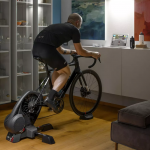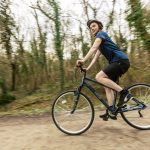Whether it’s conquering a gran fondo or clocking your fastest century, we all set cycling goals. But how do you go about achieving them? The key is structured training.
A carefully devised training plan will ensure you arrive at your event in peak condition. However, creating a plan can be daunting even for experienced cyclists, so how do you go about it? Here’s a guide to creating a cycling training plan.
Focus on your goal
It seems an obvious point, but all your planning should be centred around your goal event.
Take time to consider what physical demands the event places on you. For example, a multi-day ultra-endurance event is completely different to a crit race. One will require longer training rides while the other will focus much more heavily on high-intensity, short sessions. Use this knowledge to plan the correct training sessions for your needs.
Try to plan other similar events too. For example, if your main goal is a gran fondo, plan an event a couple of months before that’s on similar terrain. It shouldn’t be as long or hard but provides a great opportunity to test your fitness. These fitness insights can then be used to fine-tune your training leading up to your main event.
Know your training zones
When it comes to training, technology is your best friend. It’s incredibly hard to train solely on feel, which is why most riders use a heart rate monitor and power meter.
With these, you can then work out your training zones. These are essentially levels of exertion and they’re based off your heart rate or power output. Most riders structure workouts around these training zones.
Establishing your training zones is easy, and you can find a full guide to power zones here and heart rate zones here.
These aren’t just useful for training, either. When it comes to your main event, you can plan your ride around heart rate and power. By then you’ll have a good idea of what power or heart rate you can sustain for certain periods of time, and you can use this to pace yourself.
Target weaknesses
Now you’ve established your training zones, take time to consider your weaknesses. If there’s a certain area you’re particularly weak at, plan more sessions targeting this.
Take a mountainous gran fondo, for example. It’s going to be a long day in the saddle, so endurance is a key factor. However, it’ll also feature lots of climbing which means long durations at zone 3 or above. Remember, there’s no respite on most long climbs (unless you stop!). You may be comfortable riding at endurance all day but struggle more when riding zone 3, so you should spend more time targeting the latter. If it’s the opposite and you struggle on longer riders, factor more of these into your training.
Are you efficient?
Training isn’t just about boosting those power numbers. It’s also a chance to improve your efficiency on the bike. Naturally, we tend to put all our focus into power numbers. However, improving your pedalling efficiency can lead to big improvements. Here’s just a few things you should factor into your training plan.
- Cadence: Cadence comes in a close third behind heart rate and power in the list of important metrics for training. Cadence is the speed at which you pedal and is displayed as RPM (revolutions per minute). Why is this important? A slower cadence requires a more muscular effort as you’re turning a higher gear slowly. A faster cadence relies more on your cardiovascular system. A cadence of 80-95 rpm is generally recommended. If you’re below this, factor cadence drills into your training where you ride at a higher cadence than usual. You can explore our range of cadence sensors here. If you’re struggling to ride a higher cadence outdoors, you may need to use a cassette with larger gears (you should also consider using a cassette with larger gears if your goal is a hilly or mountainous event).
- Efficient pedal stroke: Is your pedal stroke efficient? The easiest way to check this is on a turbo trainer. Watch your legs as you pedal. They should go up and down like pistons. If your knees push in or out, you need to improve your efficiency. Sometimes this can be resolved by putting conscious effort into doing so. However, it’s often due to cleat position, so test around until you get that important efficient pedal stroke.
- Left, right-side balance: This is one for the turbo trainer. Most of us have one leg which is stronger than the other. This leg will worker harder on the bike and put out more power. However, you want this power difference to be as minimal as possible. That’s why it’s worth incorporating one-legged drills into turbo training. As is sounds, you take it in turns to only use one leg, which is a great way to build up strength, especially on your weaker side.
- Bike fit: Does your bike fit you correctly? A poorly fitting bike can lead to injuries, especially as you increase intensity (which of course will make your training less efficient). That’s why it’s best to get a professional bike fit before starting your plan.
Design your training plan
Now it’s time to create your training plan. Here are some top tips:
- Creating training sessions: It’s easiest to plan training sessions based on the training zones. Target areas specific to your event. If you’re unsure about how to do this, use an app (more on this below).
- Plan around life: Try to plan sessions around your life. This can be tricky, but if you’re not organised, you’ll soon find yourself missing lots of sessions.
- Don’t overtrain: One of the biggest mistakes in the book! Your body needs time to recover, so plan a rest week every 4 to 6 weeks. This means no high-intensity sessions. Any rides need to be easy. Remember, more isn’t always better.
- Adopt indoor and outdoor training: Don’t think you have to ride outside. If you’re short on time, a turbo training session is a great option. With less traffic, lights and potholes to contend with, it’s usually a more efficient way to train.
- Variation: Try to vary the length of your rides too. This will keep it fresh and interesting but will also help your body. Just because you’re doing a long gran fondo, it doesn’t mean a one-hour training session is too short. In fact, shorter rides can be more productive than longer ones (a couple of high-intensity short rides will improve your fitness more than one low-intensity long ride).
Use an app
Of course, creating a training session can be difficult, let alone a full training plan.
Which is why it’s easier to use an app. There are now lots out there which can be used for both indoor and outdoor training, like Trainerroad.
They’ll create plans based around your event or goals, ensuring you arrive on the day in the best possible shape.
Check out our selection of the best indoor training apps here, many of which can also be used for outdoor training too.
Nutrition
Finally, if you’re going to put hours into training, you want to reap all the rewards, right? That’s why you shouldn’t forget about your nutrition.
What you put into your body has a big impact on your fitness and you can really maximise those fitness gains by eating healthily.
Eat plenty of protein and ensure you get enough vitamins. And don’t forget about those carbohydrates, you’ll need them to fuel your rides.
Now’s the perfect time to plan your goals and events for the next cycling season. And with the help of this article, you can reach them in peak fitness.
Training is easier with top tech and you can find everything from power meters to heart rate monitors over at Halfords.com.
You want to conquer your cycling goals, you want Halfords.

